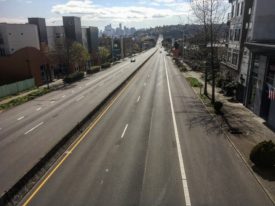 Washington reports a decline in unemployment to 5.5 percent, the lowest in four years. That’s good news for the state economy, which has struggled to rebound from the recession. But there are several reasons to temper our optimism.
Washington reports a decline in unemployment to 5.5 percent, the lowest in four years. That’s good news for the state economy, which has struggled to rebound from the recession. But there are several reasons to temper our optimism.
First, as state economist Roberta Pauer points out in articles in the Seattle Post-Intelligencer and Seattle Times, most of the job growth has occurred in the public sector, not the economy-boosting private sector: "As of mid-January 2005, Washington had 40,000 more public-sector jobs than four years before, and 43,000 fewer private-sector jobs."
Second, that the state is now "within 3,000 jobs of pre-recession levels," is not necessarily cause for celebration. As Clark pointed out last month, "the return to pre-recessionary employment levels is mostly an artifact of population growth, and only to a lesser extent a sign of an improving economy." Over the last four years, Washington has added roughly 280,000 new residents and is still down 3,000 jobs over that same period. So falling unemployment rates are only part of the story.
The unfortunate corollary to population-fueled increases in employment is that the number of unemployed also increases as a function of population growth. This is especially true when one considers all the potential workers who are not officially classified as "unemployed," for technical reasons. (The same dynamic is at work in Oregon, which is finally seeing rising employment numbers.)
Incidentally, the news is less rosy than analysts had suggested last month. A January 19 article in the Seattle Times indicated that all of the recession’s lost jobs were replaced. Today’s report says that Washington is not there yet.
Okay, okay, it’s certainly a great thing that the state is adding jobs. Plus, experts predict that the state will keep adding jobs next year. But for real progress, Washington must add jobs even faster.







